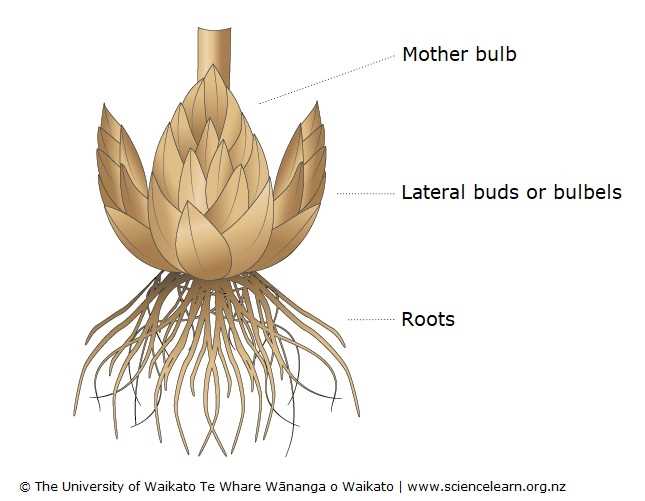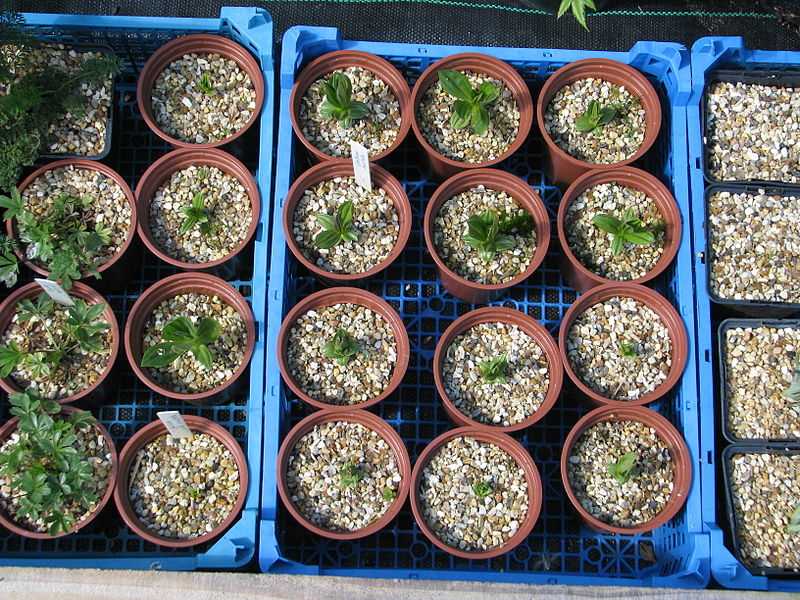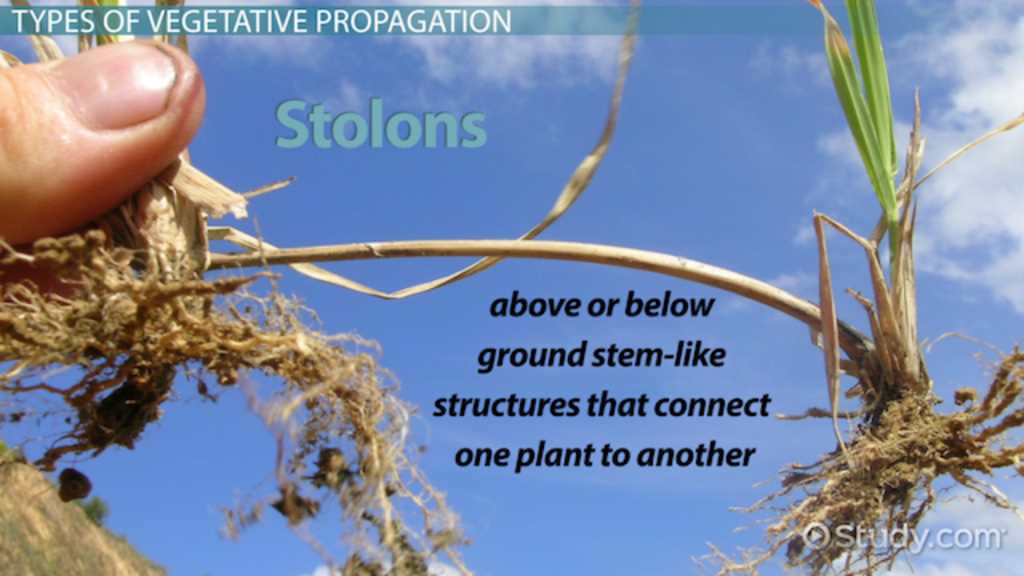- What is a Fir Tree?
- Characteristics of Fir Trees
- Types of Fir Trees
- Growing and Care
- Why Grow Fir Trees?
- Basic Requirements for Growing Fir Trees
- 1. Climate
- 2. Sunlight
- 3. Soil
- 4. Watering
- 5. Fertilization
- 6. Pruning
- 7. Pests and Diseases
- Climate and Soil
- Balsam Fir (Abies balsamea)
- Fraser Fir (Abies fraseri)
- Douglas Fir (Pseudotsuga menziesii)
- Sunlight and Water
- Sunlight Requirements
- Watering Tips
- Propagation of Fir Trees
- Seed Propagation
- Cutting Propagation
- Grafting
- Seeds
- Pollination
- Seed Development
- Seed Dispersal
- Germination and Growth
- Propagation
- Cutting and Grafting
- Cutting
- Grafting
- Species of Fir Trees
- Douglas Fir (Pseudotsuga menziesii)
- Noble Fir (Abies procera)
- Balsam Fir (Abies balsamea)
- Fraser Fir (Abies fraseri)
- White Fir (Abies concolor)
- Siberian Fir (Abies sibirica)
- Abies amabilis
- Description
- Growth and Habitat
- Propagation
- Uses
- Pests and Diseases
- References
- Conclusion
- Questions and Answers:
- How do I grow a fir tree?
- What is the best time to propagate fir trees?
- What are the different species of fir trees?
- How long does it take for a fir tree to mature?
- Can fir trees be grown in containers?
- Do all fir trees have a pyramidal shape?
- Can fir trees tolerate hot and dry climates?
- Videos: Complete Guide on Propagating and Growing Willow Tree Cuttings START TO FINISH!

Fir trees are a popular choice for landscaping due to their elegant appearance and evergreen nature. These coniferous trees are known for their tall, straight trunks, dense foliage, and pleasant aroma. In this complete guide, we will explore everything you need to know about growing, propagating, and the various species and varieties of fir trees.
Growing Fir Trees:
When it comes to growing fir trees, it’s important to choose the right location. Fir trees thrive best in well-drained soil and prefer slightly acidic conditions. They also prefer locations that receive full to partial sunlight throughout the day. Proper watering, fertilization, and pruning are important for the healthy growth of fir trees.
Propagation Methods:
Fir trees can be propagated through different methods such as seeds, cuttings, and grafting. Growing fir trees from seeds is a popular method, but it requires patience as they can take several years to reach maturity. Cuttings and grafting, on the other hand, are faster methods that allow you to reproduce the exact characteristics of a desired variety.
Species and Varieties:
There are several species of firs, each with its own unique characteristics. Some popular species include the Balsam Fir, Douglas Fir, Fraser Fir, and Noble Fir. These species vary in terms of their size, shape, needle color, and growth rate. Additionally, there are numerous varieties within each species, offering a range of options for different landscapes and preferences.
In conclusion, growing and caring for fir trees can be a rewarding experience. By understanding the different species, propagation methods, and care requirements, you can choose and cultivate the perfect fir tree for your garden or landscape. Whether you are looking for a small ornamental variety or a majestic centerpiece, fir trees are sure to add beauty and elegance to any outdoor space.
What is a Fir Tree?
A fir tree is a type of evergreen coniferous tree that belongs to the genus Abies. There are around 50 different species of fir trees found around the world, with the majority of them native to the northern hemisphere.
Fir trees are known for their distinctive cone-shaped appearance and needle-like leaves. They can vary in size depending on the species, ranging from small shrubs to tall trees reaching heights of over 200 feet.
Fir trees are commonly used in landscaping and forestry due to their attractive foliage and ability to provide shade and wind protection. They are also popular as Christmas trees, with certain species like the balsam fir and Douglas fir being preferred for their excellent needle retention and pleasant fragrance.
Characteristics of Fir Trees
Fir trees can be easily identified by their unique characteristics:
- Needles: Fir trees have flat, soft, and needle-like leaves. These needles are usually arranged in a spiral pattern along the branches, and they can vary in color from deep green to silver-blue or even yellow.
- Cones: Fir trees produce cones that are upright and cylindrical in shape. The cones mature over a period of 1-3 years and release their seeds when exposed to heat or dry conditions.
- Bark: The bark of fir trees is smooth and grayish-brown when young, but it becomes thick, rough, and furrowed with age.
- Shape: Fir trees typically have a conical shape with a straight trunk and horizontal branches that extend horizontally or slightly upward.
- Root system: Fir trees have shallow root systems that spread wide to provide stability. This makes them susceptible to wind damage in areas with strong winds.
Types of Fir Trees

There are several popular species of fir trees, including:
- Fraser Fir
- Balsam Fir
- Douglas Fir
- Noble Fir
- Grand Fir
- Subalpine Fir
Each species has its own unique characteristics and preferred growing conditions, making them suitable for various purposes such as ornamental landscaping, timber production, or as Christmas trees.
Growing and Care
Fir trees are generally easy to grow and maintain. They prefer well-draining soil and a cool, humid climate. Most fir tree species require full sun to partial shade for optimal growth.
Regular watering during dry periods and mulching around the base of the tree can help retain moisture and prevent weed growth. Pruning is usually not necessary unless you want to shape the tree or remove any dead or diseased branches.
Fertilization is typically not needed for fir trees, as they can obtain nutrients from the surrounding soil. However, a slow-release fertilizer can be applied in early spring if necessary.
Overall, fir trees are a great addition to any landscape due to their beauty, versatility, and ecological benefits. Whether you’re looking to create a windbreak, a privacy screen, or simply add a touch of greenery to your yard, a fir tree can be an excellent choice.
Why Grow Fir Trees?
- Fir trees are beautiful and add a touch of elegance to any landscape. They have a classic Christmas tree shape with dense branches and soft needles that create a lush and green appearance.
- They are low-maintenance trees that require minimal attention once established. Fir trees are generally hardy and can withstand various weather conditions, including cold temperatures and strong winds.
- Fir trees offer year-round interest, providing shade and privacy in the summer and adding visual appeal to the winter landscape. Their evergreen nature ensures that your garden will never look bare or dull.
- They have a pleasant aroma that fills the air when you are near them. The scent of fir trees can create a relaxing and tranquil atmosphere in your garden or backyard.
- Fir trees are often used as windbreaks or privacy screens due to their dense and sturdy branches. They can shield your property from strong winds, reduce noise pollution, and create a sense of seclusion.
- Fir trees are also beneficial for wildlife. They provide food and shelter for various bird species and small animals. Owning fir trees can attract wildlife to your garden and contribute to the overall biodiversity of the area.
- Finally, growing fir trees can be an enjoyable and fulfilling experience. Watching them grow and thrive over the years can give you a sense of accomplishment and satisfaction. Plus, they can be a great way to create lasting memories with your family, such as decorating the tree during Christmas.
Overall, fir trees are a fantastic addition to any garden or landscape. They offer beauty, low-maintenance, year-round interest, a pleasant aroma, wind protection, wildlife benefits, and a sense of fulfillment. Consider growing fir trees to enjoy these wonderful advantages.
Basic Requirements for Growing Fir Trees
Fir trees are beautiful coniferous trees that can add a touch of elegance and greenery to any landscape. If you are interested in growing fir trees, it’s important to understand their basic requirements in order to ensure their success. Here are some key factors to consider:
1. Climate
Fir trees thrive in cool and temperate climates. They prefer areas with cool summers and cold winters. Most fir trees are hardy and can withstand some frost, but extreme temperatures should be avoided. It’s important to choose a fir tree species that is suitable for your particular climate.
2. Sunlight
Fir trees prefer full sun or partial shade. They usually require at least 6 hours of direct sunlight per day to grow and thrive. In areas with hot summers, some species of fir trees may benefit from some afternoon shade to protect them from scorching.
3. Soil
Fir trees prefer well-draining soil that is slightly acidic. The soil should be rich in organic matter and have good water-holding capacity. Avoid heavy clay soils that can become waterlogged. If your soil is not ideal, you can amend it with compost or peat moss to improve drainage and fertility.
4. Watering
Fir trees have moderate water requirements. They should be watered regularly, especially during dry periods. It’s important to keep the soil moist but not waterlogged. Mulching around the base of the tree can help to conserve moisture and regulate soil temperature.
5. Fertilization
Fir trees generally do not require a lot of fertilizer. If your soil is poor or if the tree is showing signs of nutrient deficiency, you can apply a slow-release, balanced fertilizer in the early spring. Be careful not to over-fertilize, as this can lead to excessive growth and weaken the tree.
6. Pruning
Fir trees generally require minimal pruning. It’s important to remove any dead, damaged, or diseased branches to maintain the tree’s health. Pruning can also be done to shape the tree or to remove any crossed or overcrowded branches. Pruning should be done during the dormant season.
7. Pests and Diseases
Fir trees are generally resilient to pests and diseases. However, they can sometimes be susceptible to aphid infestations, spider mites, and fungal diseases such as root rot. Regular inspections and prompt action can help to prevent and control these issues.
By meeting these basic requirements, you can ensure that your fir trees will grow and thrive in your landscape. With their tall stature, dense foliage, and attractive cones, fir trees can bring beauty and a touch of nature to any space.
Climate and Soil
Fir trees are generally adapted to cooler climates and can be found in both temperate and subalpine regions. They are known for their ability to withstand cold temperatures, making them suitable for growing in areas with long, harsh winters.
When it comes to soil, firs generally prefer well-draining and slightly acidic soils. However, certain species have specific soil requirements:
Balsam Fir (Abies balsamea)
The balsam fir thrives in moist soils and can tolerate poorly-drained areas. It is often found growing near swamps and wetlands.
Fraser Fir (Abies fraseri)

The Fraser fir prefers acidic soils with good drainage. It is commonly found growing in the Appalachian Mountains.
Douglas Fir (Pseudotsuga menziesii)
The Douglas fir has a wider tolerance for soil types and can grow well in both acidic and alkaline soils. It prefers soils that are well-drained and moderately fertile.
In general, fir trees prefer soils that are rich in organic matter and have a pH range between 5.0 and 6.5. They do not tolerate heavy clay soils or soils with poor drainage.
It is important to note that fir trees are sensitive to air pollution and may struggle to grow in heavily polluted areas. They also require a good amount of sunlight, although some species can tolerate partial shade.
Before planting fir trees, it is recommended to test the soil to ensure it meets the specific requirements of the species you are growing. Amending the soil with organic matter and adjusting the pH, if necessary, can help create optimal growing conditions for firs.
Sunlight and Water
Fir trees require a good amount of sunlight and water to grow properly. The amount of sunlight needed will depend on the specific species, but most fir trees thrive in full sunlight or partial shade. It is important to ensure that the trees are not in the shade for the majority of the day, as this can hinder their growth.
In terms of water, fir trees need to be kept well-hydrated, especially during the first few years of growth. It is essential to regularly water the trees, but be cautious not to overwater them, as this can lead to root rot. A general rule of thumb is to provide the trees with around 1 inch of water per week.
When watering fir trees, it is recommended to water deeply, ensuring that the water reaches the roots. This helps encourage deep root growth, which enhances the tree’s stability and overall health. Mulching around the base of the tree can also help retain moisture and regulate soil temperature.
Sunlight Requirements
While some fir tree species can tolerate partial shade, most prefer full sunlight for optimal growth. Adequate sunlight exposure helps with photosynthesis, which is crucial for the tree’s production of food and energy. Without sufficient sunlight, the tree may become weak and more susceptible to diseases and pests.
It is important to place fir trees in a location where they will receive at least 6-8 hours of direct sunlight each day. If planting multiple trees, ensure that they are spaced apart appropriately to avoid overcrowding and competition for sunlight.
Watering Tips
- Water newly planted fir trees regularly to help establish their root system.
- Check the moisture level of the soil regularly and water when it feels dry to the touch.
- Deeply water the trees, ensuring that the water reaches the root zone.
- Use a soaker hose or drip irrigation system to provide slow, deep watering.
- Avoid overwatering, as it can lead to root rot. Allow the soil to dry out slightly between watering.
- Mulch around the base of the tree to help retain moisture and regulate soil temperature.
- Water fir trees early in the morning or late in the evening to minimize evaporation.
By providing fir trees with the right amount of sunlight and water, you can help ensure their healthy growth and longevity. Regular monitoring and adjustment of watering practices based on weather conditions and soil moisture levels are essential for maintaining optimal tree health.
Propagation of Fir Trees
Fir trees can be propagated through various methods, including seeds, cuttings, and grafting. Each method has its advantages and can be successful when done correctly.
Seed Propagation
One of the most common methods of propagating fir trees is through seeds. Here are the steps to follow:
- Collect mature cones from healthy fir trees during autumn.
- Allow the cones to dry and open naturally, or manually extract the seeds.
- Clean the seeds by removing any debris or damaged seeds.
- Store the seeds in a cool, dry place until sowing.
- Prepare a well-draining potting mix and fill seed trays or small pots with it.
- Sow the seeds on the surface of the soil and lightly cover them with a thin layer of the potting mix.
- Water gently to keep the soil moist but not waterlogged.
- Place the trays or pots in a sheltered area with indirect sunlight.
- Monitor the moisture levels and ensure the soil doesn’t dry out completely.
- Germination can take several weeks to a few months, depending on the species.
- Once the seedlings have grown a few inches tall, they can be transplanted into larger pots or directly into the ground.
Cutting Propagation
Cutting propagation is another effective method for propagating fir trees. Follow these steps:
- Take cuttings from healthy, well-established fir trees during late spring or early summer.
- Choose semi-hardwood or softwood cuttings that are around 4 to 6 inches long.
- Remove the lower leaves, leaving only a few sets of leaves at the top.
- Dip the cut end of the cutting in rooting hormone to stimulate root growth.
- Prepare a well-draining potting mix and fill pots or trays with it.
- Insert the cuttings into the potting mix, leaving at least one node beneath the soil surface.
- Water the cuttings thoroughly and place them in a warm, humid environment, such as a greenhouse.
- Keep the soil consistently moist but not waterlogged.
- Rooting can take several weeks to a few months, depending on the species.
- Once the cuttings have developed roots, they can be transplanted into larger pots or directly into the ground.
Grafting
Grafting is a more advanced method of propagating fir trees and is usually done by experienced gardeners or professional nurseries. Here’s how it’s done:
- Obtain a rootstock that is compatible with the desired fir tree variety.
- Collect scion wood from a healthy, mature fir tree of the desired variety.
- Make a clean, diagonal cut just below a bud on the rootstock.
- Make a corresponding diagonal cut on the bottom end of the scion wood.
- Fit the scion wood onto the rootstock, aligning the cambium layers.
- Secure the graft union with grafting tape or a grafting clip.
- Keep the grafted plant in a warm, humid environment, such as a greenhouse.
- Monitor the graft union and remove any buds or shoots below it.
- Once the graft union has healed and the scion has started growing, the plant can be transplanted into a larger pot or directly into the ground.
Propagating fir trees can be a rewarding process, allowing you to expand your collection or grow trees for landscaping purposes. Following the proper techniques and providing the right conditions will increase your chances of success.
Seeds
Seeds are an essential part of the fir tree’s life cycle. They are responsible for the propagation and growth of new trees. Fir trees produce both male and female cones, which contain the seeds. The male cones release pollen, which fertilizes the female cones, leading to seed production.
Pollination
Pollination is the process by which pollen is transferred from the male cones to the female cones. This can happen through wind pollination or through the help of insects. Fir trees have adapted to different pollination methods depending on the species.
Seed Development
Once the female cones are fertilized, they begin to develop seeds. The seeds are protected within the cone scales, which provide a safe environment for their development. As the seeds mature, the cone scales open up, allowing the seeds to be released.
Seed Dispersal
Seed dispersal is the process by which seeds are spread away from the parent tree. Fir tree seeds are typically dispersed by the wind. The wings attached to the seeds help them catch the wind and travel far distances. This allows for the colonization of new areas by fir trees.
Germination and Growth
Once the seeds land in a suitable environment, they can germinate and start to grow. Fir tree seeds require specific conditions, such as moisture, sunlight, and a suitable substrate, to germinate successfully. Once the seedlings emerge, they go through various growth stages to become mature fir trees.
Propagation
Fir tree seeds can be used for propagating new trees. The seeds can be collected from mature cones and stored in a cool, dry place until they are ready to be planted. When planting fir tree seeds, it is important to provide them with the optimal conditions for germination and growth.
| Advantages | Disadvantages |
|---|---|
|
|
Cutting and Grafting
Cutting and grafting are two common techniques used in the propagation of fir trees. They can be used to propagate specific varieties or to create new hybrids.
Cutting

When using the cutting method, a small piece of the fir tree, typically a branch or stem, is cut off and planted in a new location. This method is often used to propagate specific varieties of fir trees.
Here are the steps involved in the cutting method:
- Select a healthy branch or stem from the desired fir tree.
- Cut the branch or stem at a 45-degree angle, making sure the cut is clean and smooth.
- Remove any lower leaves or branches from the cutting, leaving only a few leaves at the top.
- Dip the cut end of the cutting in rooting hormone to promote root development.
- Place the cutting in a pot filled with well-draining soil or a rooting medium.
- Keep the cutting in a warm and humid environment, ensuring it receives indirect light.
- Water the cutting regularly, keeping the soil moist but not waterlogged.
- After a few weeks, the cutting should develop roots and can be transplanted into a larger pot or directly into the ground.
Grafting
Grafting involves joining two different varieties of fir trees to create a new hybrid. It is a more complex technique compared to cutting and requires some skill and knowledge.
Here are the steps involved in the grafting process:
- Select a rootstock, which is a healthy and well-established fir tree, to serve as the base for the graft.
- Choose a scion, which is a small branch or stem from the desired variety to be grafted onto the rootstock.
- Make a clean and diagonal cut on both the rootstock and the scion.
- Join the two cuts together, making sure the cambium layers align.
- Secure the graft with nursery tape or grafting wax to hold it in place.
- Protect the graft from excessive sunlight and wind.
- Monitor the graft regularly and remove any competing shoots or buds that may form below the graft.
- After the graft has successfully bonded, it can be planted in a pot or directly into the ground.
Both cutting and grafting are effective methods for propagating fir trees. While cutting is relatively easier, grafting allows for more control over the characteristics of the new plant. Experimentation and practice are key to mastering these techniques.
Species of Fir Trees
Fir trees are a popular choice for landscaping and forestry due to their beauty and usefulness. There are several species of fir trees, each with its own unique characteristics. Here are some of the most common species:
Douglas Fir (Pseudotsuga menziesii)
- Also known as Oregon pine, the Douglas fir is native to western North America.
- It is a tall, conical-shaped tree with blue-green needles and brown, barrel-shaped cones.
- The wood of the Douglas fir is highly valued for its strength and durability, making it a popular choice for construction.
Noble Fir (Abies procera)
- The noble fir is native to the western United States and Canada.
- It has short, stiff, bluish-green needles and large, upright cones.
- The noble fir is often used as a Christmas tree due to its symmetrical shape and long-lasting needles.
Balsam Fir (Abies balsamea)
- The balsam fir is a native of North America.
- It has flat, dark green needles and small, cylindrical cones.
- The balsam fir is known for its pleasant fragrance and is often used in the production of holiday wreaths and decorations.
Fraser Fir (Abies fraseri)
- Native to the southeastern United States, the Fraser fir is a popular Christmas tree species.
- It has dark green, flattened needles and small, purple-brown cones.
- The Fraser fir is highly valued for its symmetrical shape, excellent needle retention, and pleasant aroma.
White Fir (Abies concolor)
- The white fir is native to western North America.
- It has silvery-blue needles and long, narrow cones.
- The white fir is often used as an ornamental tree due to its striking color and graceful form.
Siberian Fir (Abies sibirica)
- Native to Russia and other parts of Eastern Europe, the Siberian fir is a cold-hardy species.
- It has dark green needles and upright cones.
- The Siberian fir is commonly used in reforestation and as an ornamental tree in colder climates.
These are just a few examples of the many species of fir trees. Each species has its own unique characteristics and benefits, making them suitable for a variety of landscaping and forestry applications.
Abies amabilis
Abies amabilis, also known as the Pacific silver fir or lovely fir, is a species of fir native to the west coast of North America.
Description
Abies amabilis is a large evergreen tree that can reach heights of up to 70 meters. It has a straight bole, a narrow crown, and branches that sweep upward. The bark is smooth and gray when young, becoming rough and fissured with age. The needles are flat, glossy dark green on the upper surface, and have two silver-white bands underneath, giving the tree a silvery appearance. The cones are cylindrical, green or purple when young, and mature to a brown color.
Growth and Habitat
Abies amabilis is typically found in coastal forests and mountainous regions, ranging from sea level to elevations of up to 2,800 meters. It prefers well-drained soils and can tolerate both sunny and shaded locations. This species grows relatively fast, especially in moist and cool environments.
Notable varieties:
- Abies amabilis ‘Spreading Star’: A compact and low-spreading cultivar.
- Abies amabilis ‘Silver Spray’: A dwarf variety with blue-green foliage.
- Abies amabilis ‘Cascade Dawn’: A variety with a weeping habit.
Propagation
Abies amabilis can be propagated through seeds or cuttings. Seeds can be collected from mature cones and sown in a well-drained medium. Cuttings should be taken from semi-hardwood or hardwood and treated with rooting hormone before planting.
Uses

Abies amabilis is a popular choice for landscaping due to its attractive foliage and shape. It is often used as a specimen tree or as part of windbreaks and shelterbelts. The wood of the tree is light, soft, and easily worked, making it suitable for various construction and woodworking purposes.
Pests and Diseases
Abies amabilis is generally resistant to most pests and diseases. However, it can be susceptible to aphid infestations and root rot if grown in poorly-drained soils.
References
- “Abies amabilis.” World Checklist of Selected Plant Families, Royal Botanic Gardens, Kew.
- Gymnosperm Database. (2021). Abies amabilis.
- Armitage, A. M. (2012). Armitage’s Manual of Annuals, Biennials, and Half-Hardy Perennials. Timber Press.
Conclusion

Abies amabilis, or the Pacific silver fir, is a majestic evergreen tree native to the west coast of North America. Its beautiful silver appearance and adaptability to different environments make it a popular choice for landscaping. Whether used as a specimen tree or grown for its timber, Abies amabilis is a valuable and stunning addition to any garden or forest.
Questions and Answers:
How do I grow a fir tree?
To grow a fir tree, you will need to select a suitable location with well-draining soil, ensure proper watering and provide adequate sunlight. It is also important to regularly prune and fertilize the tree to promote healthy growth.
What is the best time to propagate fir trees?
The best time to propagate fir trees is during the early spring when the weather starts to warm up. During this time, the trees are preparing for new growth and are more receptive to propagation methods such as seed sowing or taking cuttings.
What are the different species of fir trees?
There are several species of fir trees, including the Douglas fir, Balsam fir, Noble fir, and Fraser fir. Each species has its own unique characteristics and adaptability to different growing conditions.
How long does it take for a fir tree to mature?
The time it takes for a fir tree to mature depends on several factors, including the specific species and growing conditions. On average, it can take anywhere from 10 to 20 years for a fir tree to reach full maturity and height.
Can fir trees be grown in containers?
Yes, fir trees can be grown in containers, but it is important to choose a suitable variety that is more compact and slower-growing. Additionally, regular repotting and proper care, such as watering and fertilizing, are necessary for container-grown fir trees.
Do all fir trees have a pyramidal shape?
No, not all fir trees have a pyramidal shape. While many fir trees are naturally pyramidal in shape, there are some varieties that have a more columnar or upright growth habit. It is important to consider the specific variety when selecting a fir tree for your desired shape.
Can fir trees tolerate hot and dry climates?
Most fir trees prefer cooler and more moderate climates, but there are some species and varieties that can tolerate hot and dry climates to some extent. However, it is important to provide adequate irrigation and shade during extreme heat to ensure the health and survival of fir trees in such environments.







